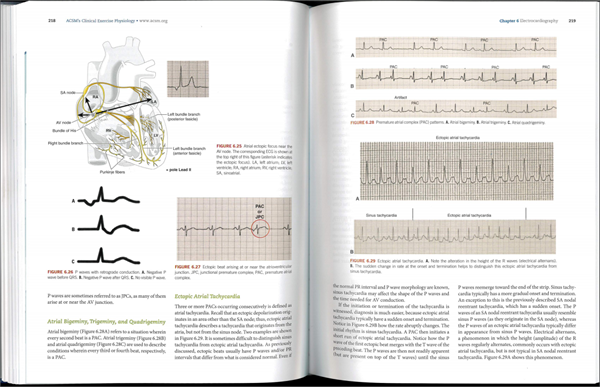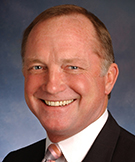Walt Thompson, Ph.D., FACSM, ACSM-CEP, RCEP, PD |
April
16, 2019
For Walt Thompson, Ph.D., FACSM, ACSM-CEP, RCEP, PD, a void had always existed in the market for a single text that brought applied exercise physiology principles to a clinical setting in a robust way. From this need ACSM’s Clinical Exercise Physiology was created. ACSM staff sat down with Dr. Thompson to discuss what makes this book unique and who can most benefit from its contents.
What is unique about ACSM’s Clinical Exercise Physiology that sets it apart from other texts in the market?
This is the first book of its kind that is comprehensive and looks at exercise physiology from a clinical perspective. This means that there are chapters in this book that you wouldn’t normally find in an exercise physiology book. For example, there is a whole chapter on electrocardiography. Most of the clinical exercise physiology books that you’ll see may have a mention of electrocardiography, but you typically must buy another book to get that EKG experience. We made sure it was included. Also important to this book are the many case studies. In the chapter on EKGs, as the student you’re asked to study the case and make an interpretation of the EKG to determine what is going on with the patient.

Another unique feature of this book is a complete chapter on genetics. Typically, you don’t see a genetics chapter in any exercise physiology book, but we felt like it was important. It is an evolving field, especially when you’re talking about behavior change systems and adaptability to exercise and physical activity. The chapter was written by Tim Lightfoot, Ph.D., FACSM. He is a world-renowned geneticist and brings tremendous value to the book.
At 782 pages, this is a large book! What other content is included?
Several chapters focus on diseased states. However, as clinicians we know that there are comorbidities. For example, if an individual has pulmonary disease, they likely will have hypertension or cardiovascular disease linked to hypertension. This book has a chapter dedicated to those comorbidities, or what some call multi-morbidities. That chapter takes all those separate conditions and applies them to real patients. No longer do you have to go to separate books because this book has a single chapter devoted to bringing all those conditions together. That’s an important component of the book, because no patient that I’ve ever encountered in my 40 years of working with patients has ever had just one morbidity.
Does ACSM’s Clinical Exercise Physiology include information on youth?
Yes! Chapter two is titled “Across the Lifespan.” The authors talk about what happens to women who are pregnant, when they give birth, after they give birth, and then follow the child all the way through adulthood. So “Across the Lifespan” is another unique chapter in which we talk about the genesis of disease and about different diseases that you might acquire during your life.
Clinical exercise physiology is a field not everyone is familiar with in terms of a career path. What types of careers would someone who would be studying from this book or taking a course using this book be looking to go into?
This book was written for advanced undergraduate and graduate students. After you’ve taken basic exercise physiology and have an understanding of exercise physiology, you would turn to this book which focuses on applying exercise physiology principles in a clinical setting. The kind of role that this would prepare you for is a hospital-based job or in a medical fitness center. More and more clinical exercise physiologists are also being hired in health clubs.
Employers are looking for individuals specifically trained in clinical exercise physiology because patients are being released from the hospital still in what we might consider a clinical phase. They are still recovering from their heart attacks, from pulmonary disease and other conditions. They are being sent home but need to be taken care of by somebody. So now health clubs are one of the biggest employers of exercise physiologists and clinical exercise physiologists. If you’re interested in that kind of profession, you will want to pursue a certification from ACSM either as a certified exercise physiologist or a certified clinical exercise physiologist. You can find more information here.
Is this book an appropriate resource for individuals who are preparing to take the ACSM Certified Clinical Exercise Physiologist exam?
Yes!
How can a course instructor request a desk copy if they are interested in adopting ACSM’s Clinical Exercise Physiology for their classroom?
Learn all about how to adopt an ACSM text for your course here.
As a benefit to instructors who adopt this text, it comes with many ancillary resources. Can you tell us about those?
A number of resources become available to the instructor for free. One is a test bank. As a college professor myself, I know it’s beneficial to have a test bank that is directly associated with the book you’re using in class, so one has been created for each chapter. Second, a PowerPoint presentation has been created for each chapter for use in the classroom. Finally, all the graphics that are in this book are available for download to insert into PowerPoint or to use independently. Many professors have decided to adopt this book because of the ancillary materials that are great additions to the classroom.
Why did you want to be involved in the creation of this book?
I always wanted to write a book on clinical exercise physiology! My first job was in Chicago working in cardiac rehabilitation. What was lacking back then, and was lacking until this book published, is a book specifically on the clinical application of exercise physiology. It is a book that has not appeared on the market before and there was a void in circles that needed a book on clinical exercise physiology, and now we have it.
Watch the full video interview with Dr. Thompson on the ACSM Facebook page.
Learn more about ACSM’s Clinical Exercise Physiology, download a free sample and order the book.
 Walt Thompson, Ph.D., FACSM, ACSM-CEP, RCEP, PD, is a Regents Professor and Associate Dean in the College of Education and Human Development at Georgia State University in Atlanta, Georgia. He has been involved in the leadership of many ACSM Committees and served as the 61st President of the American College of Sports Medicine.
Walt Thompson, Ph.D., FACSM, ACSM-CEP, RCEP, PD, is a Regents Professor and Associate Dean in the College of Education and Human Development at Georgia State University in Atlanta, Georgia. He has been involved in the leadership of many ACSM Committees and served as the 61st President of the American College of Sports Medicine.